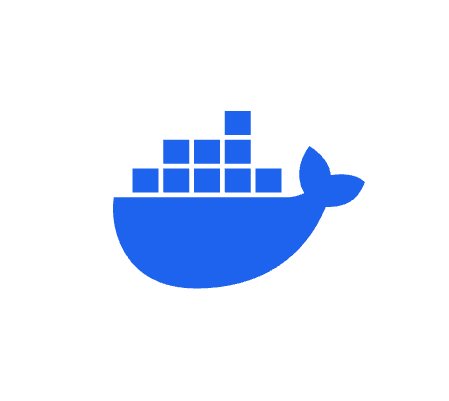Nobody wants a spineless application development process. What do I mean by this? The spine is the backbone that supports and provides nerve channels for the human body. Without it, we would be floppy, weaker, and would struggle to understand how our extremities were behaving. A slightly tortured analogy, but consider the application lifecycle of the average software project. The traditional challenge has been, how do we give it a spine? How can we provide a backbone to support developers at every stage and a nerve channel to pass information back and forth, thereby cementing architectural constructs and automating or simplifying all the other processes required for modern applications?
We built Docker Compose specifically to be that spine, providing the foundation for an application from its inception in local development through testing and on to final deployment and maintenance as the application runs in the wild and interacts with real users. With Docker Compose Bridge, Docker Compose filled out the last gaps in full application lifecycle management. Using Compose Bridge, teams can now, with a single Compose file, take a multi-container, multi-tiered application from initial code and development setup all the way to production deployment in Kubernetes or other container orchestration systems.
Before and After: How Docker Compose Adds the Spine and Simplifies AppDev
So what does this mean in practice? Let’s take a “Before” and “After” view of how the spine of Docker Compose changes application lifecycle processes for the better. Imagine you’re building a customer-facing SaaS application—a classic three-tier setup:
- Go API handling user accounts, payments, and anti-fraud check
- PostgreSQL + Redis for persistence and caching
- TypeScript/React UI that customers log into and interact with
You are deploying to Kubernetes because you want resilience, portability, and flexibility. You’ll deploy it across multiple regions in the cloud for low latency and high availability. Let’s walk through what that lifecycle looks like before and after adopting Docker Compose + Compose Bridge.
Before: The Local Development “Works on My Machine” Status Quo
Spinning up multiple containers with a script and docker run might seem fine when you’re the only one working on the project. A quick Bash snippet like the one below will create a network, start Postgres, Redis, your Go backend, two supporting services, and a React UI:
docker network create saas-net
docker run -d --name postgres --network saas-net \
-e POSTGRES_PASSWORD=secret postgres:16
docker run -d --name redis --network saas-net redis:7
docker run -d --name go-api --network saas-net \
-e DB_URL=postgres://postgres:secret@postgres/saasdb \
-p 8080:8080 go-saas-api:latest
docker run -d --name payments --network saas-net payments-stub:1.2
docker run -d --name fraud --network saas-net anti-fraud:latest
docker run -d --name saas-ui --network saas-net \
-p 3000:3000 saas-ui:latest
The trouble begins the moment you add a second developer or a second environment or try to share this script with a team that has different requirements for its application. Every variation (local build vs. CI, ARM laptop vs. x86 desktop, feature branch vs. main) demands another hand-rolled script and another README diff. What started as one neat file quickly morphs into a pile of nearly identical shell fragments that each team must keep in sync. Minor drifts, such as an updated image tag, a renamed environment variable, a forgotten volume, can quickly snowball into “why-doesn’t-it-run-for-me?” support tickets.
Worse, those scripts push tasks that belong to platform engineering back onto application developers: managing overlay networks, persisting volumes, wiring secrets, proxying traffic through a gateway, and bolting on observability. Sure, you could sprinkle in docker network create, docker volume create, and a grab-bag of community tools for WAFs, APM, and vulnerability scanning. But now you’re maintaining Bash, Makefiles, or Python in addition to Docker resources. (And if you leave for a multi-million dollar AI contract, then your team is left piecing together how your spaghetti scripts work while swearing they will never collaborate with you on another open source project again.)
After: One Line for Universal Local Environment
A Docker Compose file collapses all of that sprawl into a single, declarative artefact that lives right beside your code. Networks, volumes, secrets, and service definitions sit in one YAML, version-controlled with the rest of the repo, and every environment—new laptop, CI runner, or production staging box—starts the exact same way:
docker compose up
No extra scripting language to learn, no duplicate setup scripts to track, and no finger-pointing when a flag goes missing. One file, one command, zero “works on my machine” surprises. Remember those multiple containers you had to set up individually? Now, your Docker Compose “Spine” carries the message and structure to automatically set all those up for you with a single command and a single file (compose.yaml)
The resulting YAML pulls down and lists in a readable format the entire setup (database, cache, API, UI/UX) of your setup, all living on a shared network with security, observability, and any other necessary services already in place. Not only does this save time and ensure consistency, but it also greatly boosts security (manual config error remains one of the leading sources of security breaches, according to the Verizon 2025 DBIR Report). This also standardizes all mounts and ports, ensuring secrets are treated uniformly. For compliance and artifact provenance, all audit logs are automatically mounted for local compliance checks.
Compose also makes debugging and hardening apps locally easier for developers who don’t want to think about setting up debug services. With Compose, the developer or platform team can add a debug profile that invokes a host of debug services (Prometheus for metrics, OpenTelemetry for distributed tracing, Grafana for dashboards, ModeSec for firewall rules). That said, you don’t want to add debug services to production apps in Kubernetes.
Enter Compose Bridge. This new addition to Docker Compose incorporates environmental awareness into all services, removing those that should not be deployed in production, and provides a clean Helm Chart or YAML manifest for production teams. So application developers don’t need to worry about stripping service calls before throwing code over the fence. More broadly, Compose Bridge enforces:
- Clean separation – production YAML stays lean, with no leftover debug containers or extra resource definitions.
- Conditional inclusion – Bridge reads
profiles:settings and injects the right labels, annotations, and sidecars only when you ask for them. - Consistent templating – Bridge handles the profile logic at generation time, so all downstream manifests conform to stage and environment-specific policies and naming conventions
The result? Platform Operations teams can maintain different Docker Compose templates for various application development teams, keeping everyone on the established paths while providing customization where needed. Application Security teams can easily review or scan standardized YAML files to simplify policy adherence across configuration verification, secret handling, and services accessed.
Before: CI & Testing Lead to Script Sprawl and Complexity
Application developers pass their code off to the DevOps team (or have the joy of running the CI/CD gauntlet themes). Teams typically wire up their CI tool (Jenkins, GitLab CI, GitHub Actions, etc.) to run shell-based workflows. Any changes to the application, like renaming a service, adding a dependency, adjusting a port, or adding a new service, mean editing those scripts or editing every CI step that invokes them. In theory, GitOps means automating much of this. In practice, the complexity is thinly buried and the system lacks, for better or for worse, a nervous system along the spine. The result? Builds break, tests fail, and the time to launch a new version and incorporate new code lengthens. Developers are inherently discouraged from shipping code faster because they know there’s a decent chance that even when everything shows green in their local environment tests, something will break in CI/CD. This dooms them to unpleasant troubleshooting ordeals. Without a nervous system along the spine to share information and easily propagate necessary changes, application lifecycles are more chaotic, less secure and less efficient.
After: CI & Testing Run Fast, Smooth and Secure
After adopting Docker Compose as your application development spine, your CI/CD pipeline becomes a concise, reliable sequence that mirrors exactly what you run locally. With a single compose.yaml checked into the repo, the CI pipeline can bootstrap exactly the same multi-service stack that developers run locally. Docker Compose wires up networks, provisions volumes and secrets, and starts services in dependency order; when you add depends_on with condition: service_healthy, it also waits for each prerequisite to report healthy before the next one launches. During the test phase, your code can interact with those running services or spin up additional, throw-away resources via Testcontainers, giving every test case its own clean database, queue, or third-party mock. After the tests finish, Compose tears down the stack. It will also remove named volumes while Testcontainers automatically cleans up the containers it created. The result is consistent environments from laptop to CI, faster feedback cycles, and a promotion path to staging or production that needs little or no manual adjustment.
If you carefully craft your own transformer image with the Kubernetes or Helm templates matching your organization’’s best practices for Kubernetes deployments, Compose Bridge further elevates this efficiency and hardens security. After running tests, Bridge automatically converts your Docker Compose YAML file into Kubernetes manifests or a Helm chart, injecting network policies, security contexts, runtime protection sidecars, and audit log mounts based on your profiles and overlays. There’s no need for separate scripts or manual edits to bake in contract tests, policy validations, or vulnerability scanners. Your CI job can commit the generated artifacts directly to a GitOps repository, triggering an automated, policy-enforced rollout across all environments. This unified flow eliminates redundant configuration, prevents drift, and removes human error, turning CI/CD from a fragile sequence into a single, consistent pipeline.
Before: Production and Rollbacks are Floppy and Floundering
When your application leaves CI and enters production, the absence of a solid spine becomes painfully clear. Platform teams must shoulder the weight of multiple files — Helm charts, raw manifests for network segmentation, pod security, autoscaling, ingress rules, API gateway configuration, logging agents, and policy enforcers. Each change ripples through, requiring manual edits in three or more places before nerves can carry the signal to a given cluster. There is no central backbone to keep everything aligned. A simple update to your service image or environment variable creates a cascade of copy-and-paste updates in values.yaml, template patches, and documentation. If something fails, your deployment collapses and you start manual reviews to find the source of the fault. Rolling back demands matching chart revisions to commits and manually issuing helm rollback. Without a nervous system to transmit clear rollback signals, each regional cluster becomes its own isolated segment. Canary and blue-green releases require separate, bespoke hooks or additional Argo CD applications, each one a new wrinkle in coordination. This floppy and floundering approach leaves your production lifecycle weak, communication slow, and the risk of human error high. The processes meant to support and stabilize your application instead become sources of friction and uncertainty, undermining the confidence of both engineering and operations teams.
After: Production and Rollbacks are Rock Solid
With Docker Compose Bridge acting as your application’s spinal cord, production and rollbacks gain the support and streamlined communication they’ve been missing. Your single compose.yaml file becomes the vertebral column that holds every service definition, environment variable, volume mount, and compliance rule in alignment. When you invoke docker compose bridge generate, the Bridge transforms that backbone into clean Kubernetes manifests or a Helm chart, automatically weaving in network policies, pod security contexts, runtime protection sidecars, scaling rules, and audit-log mounts. There is no need for separate template edits. Changes made to the Compose file propagate in real-time through all generated artifacts. Deployment can be as simple as committing the updated Compose file to your GitOps repository. Argo CD or Flux then serves as the extended nervous system, transmitting the rollout signal across every regional cluster in a consistent, policy-enforced manner. If you need to reverse course, reverting the Compose file acts like a reflex arc: Bridge regenerates the previous manifests and GitOps reverts each cluster to its prior state without manual intervention. Canary and blue-green strategies fit naturally into this framework through Compose profiles and Bridge overlays, eliminating the need for ad-hoc hooks. Your production pipeline is no longer a loose bundle of scripts and templates but a unified, resilient spine that supports growth, delivers rapid feedback, and ensures secure, reliable releases across all environments.
A Fully Composed Spine for the Full Lifecycle
To summarize, Docker Compose and Compose Bridge give your application a continuous spine running from local development through CI / CD, security validation and multi-region Kubernetes rollout. You define every service, policy and profile once in a Compose file, and Bridge generates production ready manifests with network policies, security contexts, telemetry, database, API and audit-log mounts already included. Automated GitOps rollouts and single-commit rollbacks make deployments reliable and auditable and fast. This helps application developers focus on features instead of plumbing, gives AppSec consistent policy enforcement, allows SecOps to maintain standardized audit trails, helps PlatformOps simplify operations and delivers faster time to market with reduced risk for the business.
Ready to streamline your pipeline and enforce security? Give it a try in your next project by defining your stack in Compose, then adding Bridge to automate manifest generation and GitOps rollouts.





